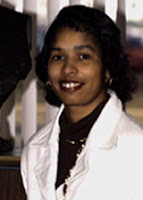 The Poster Project wants to change the way that scientists are viewed by the general public:
The Poster Project wants to change the way that scientists are viewed by the general public:The primary goal of this project is to change the intellectual and emotional climate surrounding the idea of scientific research in order to increase the number of women and girls who choose to pursue careers related to the physical sciences and mathematics, and to retain, at the high school and university level and beyond, women who have already chosen such careers.To that end they have a series of posters depicting real women in the sciences, created by artist Pamela Davis Kivelson. There are biographies of the project participants to go along with the posters.
The other major goal is to encourage scientific literacy by humanizing the image of science and the scientist (from .
You can purchase individual posters for $30 each, or buy a topically-related set. Perfect for the science classroom!





